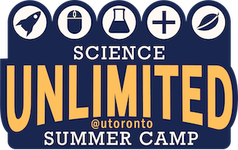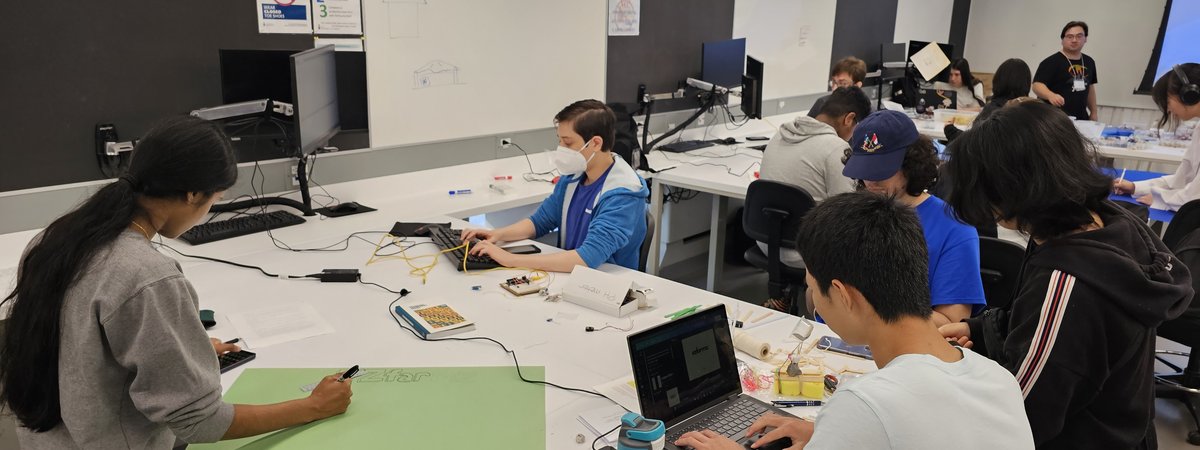Astronomy
Einstein's Theory of General Relativity
Over 100 years ago, Einstein's theory of General Relativity revolutionized the way we think about space and time. Rather than being static, he discovered that space-time is a malleable fabric that can be stretched and bent to form gravitational lenses, black holes, wormholes, and other exotic phenomena. In this session, we’ll explore the mind-bending consequences of this theory using a simple experiment. We will also give a tour of our observatory and telescopes, located on the roof of the Physics building at the University of Toronto. Weather permitting, we will be able to observe the sun through one of our telescopes with a solar filter, which will allow us to see sunspots and solar prominences.
Chemistry
When Life Gives you Lemons, you do Nanoscience!
Chemistry is utilized on every scale of life from what foods we choose to eat to how we generate and transform energy. A current exciting field of application is in nanotechnology, where everything from television displays to medical treatments are being innovated on through the bizarre, unexpected world of the nanoscale! In this experiment, we will create our very own nanomaterials known as quantum dots utilizing some unassuming materials and some clever chemistry. These nanometer sized materials (almost 100,000 times smaller than the width of a human hair!) while invisible to the naked eye, can glow different colors that span the entire rainbow. They aren’t just pretty to look at though, and while exploring some of their interesting properties we will also test out some of their applications to learn a bit about how we utilize the nano world!
Computer Science
Developing a program from idea to finished code
In this workshop, participants will practice turning everyday commands into a set of instructions that a computer can follow. Participants will also explore ways to break up those instructions into a series of inputs, processes, and outputs. Then, in groups, participants will brainstorm ideas for a program, choose one to describe in greater detail, and with the help of generative AI, write the program.
Earth Sciences
Rock of ages: A tour through geologic time
The Earth formed ~4.6 billion years ago, and much has changed since then! We invite students to travel back in time, pausing along the way to learn about important events in the Earth’s history. Students will be divided into three groups, each one taking a turn to “visit” a different time period with an associated activity. Activities will introduce students to three different areas of earth science: petrology, sedimentology/paleontology, and environmental science.
Forensic Geosciences: The Case of Old York Lake
Hundreds of dead fish have been found in Old York Lake. The cause of death: heavy metal poisoning from the illegal dumping of electronic waste. Only YOU can help us crack this crime, discover which of the three suspects is guilty, and help restore the local groundwater to its original state! In this activity, students will use microscopes to examine thin sections of rocks, learning about optical properties of minerals. Students will have an opportunity to use a scanning electron microscope. Finally, students will create their own groundwater systems to visualize how contaminants travel through aquifers, and discuss methods for removing contamination.
Mathematics
Folding, Cutting, and Conjectures
Participants will discuss the question, “What is a conjecture?”. Following the discussion, students will engage in a math activity that involves folding and cutting paper to explore various geometric concepts. The primary goal of this activity is for students to generate as many conjectures as possible.
Physics
Using Physics and Chemistry to Measure the Atmosphere
Although the term climate change has become commonplace in our everyday language, few people actually know how climate-related data are measured and analyzed. This session will introduce you to a variety of instruments that make climate-related measurements of the atmosphere.
You will participate in a series of climate-science activities including investigating cloud formation and the chemistry of aerosols by creating clouds in the laboratory; learning how the Arctic atmosphere is being studied; and exploring the electromagnetic spectrum and the physics of light through spectroscopy by constructing a spectroscope and examining the spectra of various light sources.
Scientific Computing in Physics
Scientific computing is a major tool in physics research. In this workshop, students will learn about computer simulations of physical systems. How does one computerize the laws of physics? How does one model collisions? How do the approximations in computer models compare with reality? Simple models of projectile motion and trajectories.
School of the Environment
COBWEB Simulation Program
This session provides students with an introduction to complexity using interactive activities and the COBWEB simulation program. The interactive activities are used to introduce a conceptual framework for discussion complexity (attractors, resilience, collapse, sensitivity to initial conditions, self-organization, agent-based modelling, game theory). These interactive activities are drawn from branches of mathematics (number theory) economics and (game theory) as well as physics and computer science. COBWEB has been used to represent a range of systems from fields as diverse as neuroscience, psychology and ecology to economics, sociology and geography. We will use some of these systems to explore how complexity can be used to understand the behaviour of a large number of systems. Students will get an introduction to complexity, simulation and experimental design.

